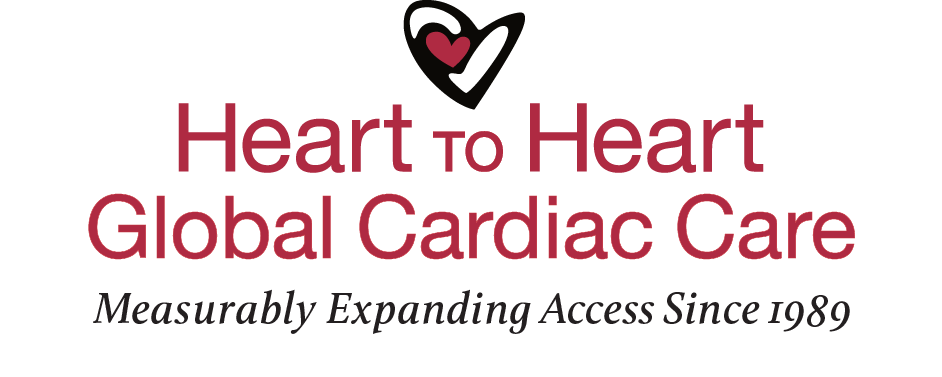The road to self-sustainability
One of the reasons I love working with Heart to Heart is the effectiveness of our program model and our promotion of self-sustainability. Most families with children born in areas lacking access to optimal heart care cannot afford to travel to medical experts. “Drive-by” medical mission trips send doctors and nurses to treat children in remote locales, but this model results in poor follow-up. Once the humanitarian mission leaves town, life-saving procedures stop. These attempts do not improve local health care for the long-term.
Heart to Heart works with local medical professionals to develop self-sustaining pediatric cardiac centers in regions that currently lack access to quality heart care. Once a center is self-sustaining, babies and children with complex congenital heart conditions can be treated locally in perpetuity.
The road to self-sustainability is a fascinating one. It begins with evaluating potential sites to find a good match for our program. We look for sites that are in major cities that reach a large underserved population. Once a site is selected, we thoroughly assess the current program so we can develop a training approach. We then travel on the first of many surgical-educational missions to that site.
Our surgical-educational missions are where the real work happens. During these visits we train local pediatric cardiac specialists in diagnosis, new surgical and interventional techniques, and post-operative patient management. We also emphasize team-building and role-model effective communication to enhance patient care. For 5-7 years, we routinely assess program outcomes and train a developing team until they are able to treat patients of all ages and all defect complexities without Heart to Heart’s assistance.
The effectiveness of this model can be measured through success stories like that of the Tomsk Cardiology Institute located in Western Siberia. Heart to Heart teams traveled on missions to Tomsk for seven years. In the first year, the Tomsk team was performing cardiac surgery on older children with relatively simple lesions. A few years into our partnership, the Tomsk team was able to perform repair of Tetralogy of Fallot on babies 3-6 months old. The Tomsk team now performs Norwood operations, neonatal truncus arteriosus repairs, and arterial switch operations with results comparable to advanced U.S. and European centers. Operative mortality rates for pediatric cardiac surgery in Tomsk decreased five-fold during our seven-year partnership.
The Heart to Heart model is unique. Over the past 25 years, we have succeeded in establishing three self-sustaining pediatric cardiac programs – and another three are currently in development. Even though our Tomsk missions have concluded, we still continue to collaborate with our colleagues in helping to strengthen the nationwide network of pediatric cardiac specialists. Since the last surgical-educational mission to Tomsk, our Russian colleagues have worked with us at Heart to Heart’s other partner sites. Tomsk physicians also routinely discuss patient management issues with Heart to Heart medical volunteers in the U.S. via email, Skype, and Dropbox. The electronic world has eliminated many impediments to sustaining quality care in Siberia. My hope is that this model can be proliferated worldwide for all children with congenital heart disease.
Respectfully,
Frank Cetta, MD
Dr. Frank Cetta works as the Division Chair of Pediatric Cardiology at the Mayo Clinic in Rochester, MN.
He has helped lead more than 12 surgical-educational missions at multiple Heart to Heart partner sites throughout all of Russia. He was recently honored for his contributions to the development of pediatric cardiology in Siberia.
Dr. Cetta serves on Heart to Heart’s medical advisory council and was elected to Heart to Heart’s governing board in July 2013. Read more about Dr. Cetta.

